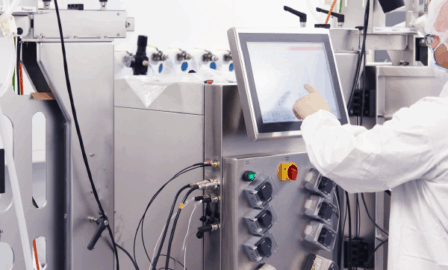Bring the Future to the Present with Enterprise Destination Mapping
A corporation is tied to its corporeal beings, who are bound to the present and must work tirelessly to see into the fog of the future. In striving to marry growth and risk assessment, leadership can end up addressing long-term risk with short-term solutions, inviting entropy and inflexibility. Tactical responses to immediate concerns can make an organization vulnerable to disruption over time, as a narrow spotlight obscures both imminent threats as well as alternative paths for future growth.
In working with our clients, we’ve seen this type of management put leaders in a perpetual game of cat and mouse between futurist thinking and present limitations. In many cases as we work to develop an Enterprise Destination Map (EDM) for our clients’ long-range plan, the initial set of ideas are tactical and immediate, often with a horizon of less than a year. There’s also a perception that strategy launch must be immediate, and when plotted on a time continuum, the strategic plan is often crippled with arms that seldom extend into year two.
Our brains struggle to transport us to the final destination and as such, we remain anchored in the present, spurting out short-sighted action plans in response to persistent problems. But lasting change cannot be driven in such a short scope, as true value takes dedicated time, planning, and patience. An efficacious strategy is one that considers 3-to-5-year horizons, broadening the scope to bridge the gap between here and there: bringing the future destination into the present. By making the future our new present, we are better suited to create plans that get us closer to our aspirations and ultimate ambitions as an organization.
In our work with clients, we’ve harnessed this mindset and used it to drive meaningful change:
A client with aspirations of double-digit growth within 5 years was anchored in improving how to target customers, better profile, activate and market to them. An enormous effort on master data and golden client was in place to ensure all systems and disjointed applications have clean data of their existing customers. But reaching double-digit growth wasn’t possible with the current plan and focus of targeting the current client base. By “bringing the future to the present,” we helped them realize that their current customer base won’t be able to help them get to double digits even if their master data and ability to target them was perfect; only through identifying and targeting non-customers in new markets and channels could they grow in the way desired. From this, we found that cleaning the data of existing customers shouldn’t be the priority. Rather, it should be using unconventional advanced analytics tactics to gather data so they could target customers they weren’t selling to. This completely changed the client’s approach for the better.
Another client was looking at a transformation of their portfolio as an avenue for growth, with aims to increase non-traditional products and move into other channels and categories. Their initial goal was to invest in operational excellence across their installed manufacturing capacity. But after “bringing the future to the present” and looking at their new “future” portfolio, they realized that under the new realities, they shouldn’t be in the ownership business of manufacturing. Rather, they needed a light and agile manufacturing footprint aligned with their diverse future portfolio; short term investments in optimization and efficiency in the manufacturing plants was far from helping them achieve their future aspirations of harnessing a winning portfolio of products.
Another of our clients with ambitious aspirations for growth in 3-5 years wanted to expand their presence in North America by bringing products through multiple ports of entry, transitioning from a highly concentrated single-point-of-entry strategy. After “bringing the future to the present” and looking at a supply chain network with many ports and balanced distribution of product across many locations, their strategy transformed. Their original goal of improving their own teams of quality, customs, and warehousing operations at one single port changed to a strategy of developing partnerships to cover similar functions across many ports instead of deploying their own teams; a more agile framework was needed to achieve their future state goal; using their current approach was simply not scalable.
In bringing the future to the present, you can bring your goals to where you are today. Futurist thinking can act as a vehicle through which to reach your aspirations of growth and transformation and achieve your enterprise destination. At Clarkston, we take on our clients’ goals as our own to holistically integrate forward thinking and strategic excellence for sustainable growth.



